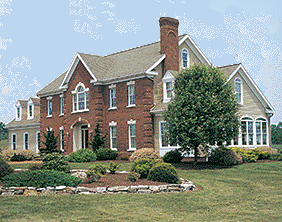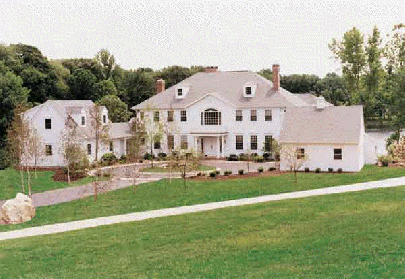
Melton Engineering and
Homebuilders - Indian Creek Homes
"Homes for the 21st Century"
MODULAR HOMES AND INDUSTRIALIZED HOUSES AND BUILDINGS (Construction Tech)
Most folks in the south think modular, trailer house, mobile home, or manufactured home mean roughly the same thing. This is not even close to reality. All of the above homes are built in similar manufacturing facilities with one major difference. Manufactured homes, trailer houses, etc. are built to a federal standard called the HUD Code (Housing and Urban Development). Modular homes, or to use their appropriate legal identification, Modular or Industrialized Houses and Buildings, are built to normal building codes under the Industrialized Housing and Building Act (IHB Act). These codes are the International Building Code, International Plumbing Code, the International Mechanical Code, the National Electric Code, and the International Fuel Gas Code. The HUD code, to which trailer houses, manufactured houses and mobile homes are built, Was specifically legislated into law in 1976 to provide affordable (cheap) housing, built to sub-standard building codes. Don't let the manufactured housing industry fool you. They commonly use the term "Modular Housing" illegally to describe their "HUD" built homes. The IHB Act says that only buildings built to the IHB act can call themselves "Modular".

In 2002, 36,000 modular homes were built across the USA, mostly in the upper Midwest and the northeast. Less than 1,000 modular buildings have been built in Texas since the (IHB) Act was passed in 1989. And, these were mostly temporary construction buildings, or duplex type housing.
Traditional manufactured homes (mobile homes, trailer houses, etc.) are generally the only familiar home product built entirely in a manufacturing facility in Texas. Manufactured homes have a significantly lower level of quality of materials and workmanship than do homes built to traditional building codes. This is directly due to the lesser building standards in the HUD Code. The HUD Code was developed in order to allow for extremely cheap housing to be built. The home to the right is a modular home built in a manufacturing facility in Virginia. It was delivered to the site in 6 pieces, assembled with a crane onto a traditional concrete foundation, and its masonry exterior was installed at the site (the garage on the far side was built on site also).
So now you are saying, "That does not look like a trailer." In fact, most people in Texas associate modular homes directly with trailers and mobile homes. This is because of the obvious connection between a doublewide and a home made in modules, or because of the success of the modular home industry in other parts of the country and the piggybacking of the "modular" name. Unfortunately for Texas, "modular" homes are understood to be the same thing as "manufactured housing". Which can be no further from reality. A search on the web for "modular Homes, Texas" reveals numerous references to modular construction where only HUD products are being built. This is a direct misrepresentation based on misunderstanding of people in the industry! Even the HUD industry in Texas doesn't know about IHB construction...
Modular homes are unbelievable more available in the northeast and Midwest portions of the USA than in Texas. The Modular Links page (You have to visit some of these sites -The homes are outstanding) lists a small portion of the over 200 modular home manufacturers in the USA.
Why is there no significant modular home industry in Texas? Good question. One I have asked myself many times. And a question for which I don't have a definitive answer. Maybe it is because trailer homes are to cold in northern climates? This could have kept their bad reputation from tainting the modular home market up north with a bad reputation. Or maybe it is because home prices have traditionally been lower in the south? This could have led to the earlier utilization of modular homebuilding in the north as a way to provide quality housing at a more efficient price than was available with traditional building methods.

In Texas, the State Legislature passed the Texas Industrialized Housing and Building Act (IHB Act) in 1989. This law allowed homes to be built in manufacturing facilities under standard residential building codes and, the law allowed these homes to be placed in any zoning district in a city, unless restrictive covenants somehow prohibited them. In other words, municipalities were not allowed to discriminate against modular homes like they do (and rightly so) against manufactured housing. During this legislative session (2003) the Texas Legislature enacted a law that required modular homes to meet similar aesthetic standards and be priced at the average tax roll value for homes within 500 feet of the modular home. This is good news for the IHB Act. The 2003 law was passed was because of many developers have been placing modular homes with the aesthetic considerations of manufactured homes (they looked like trailer houses) in established neighborhoods in proximity to higher value homes. This decreased the value of the other homes in those neighborhoods and eventually the situation became widespread enough to get a law passed against it.
There are 37 states in the nation that have similar laws to ours. Manufacturers in the northeast have been building modular homes for over three decades. And yes, the picture of the sprawling mansion above is a modular home.
Another interesting fact, One of the bigger builders of modular homes in the northeast is Nationwide Homes (not to be confused with Nationwide Manufactured Homes of Texas). On average, they ship over half of their homes only 70% finished. The entire (or virtually entire) interior is completed, but the exterior has no finish covering – it is shipped with OSB siding (normal under sheathing) only. The developer then places the home on a foundation with a brick ledge and installs masonry on the entire home.
Note: All home images appearing in this web site are of modular constructed homes.